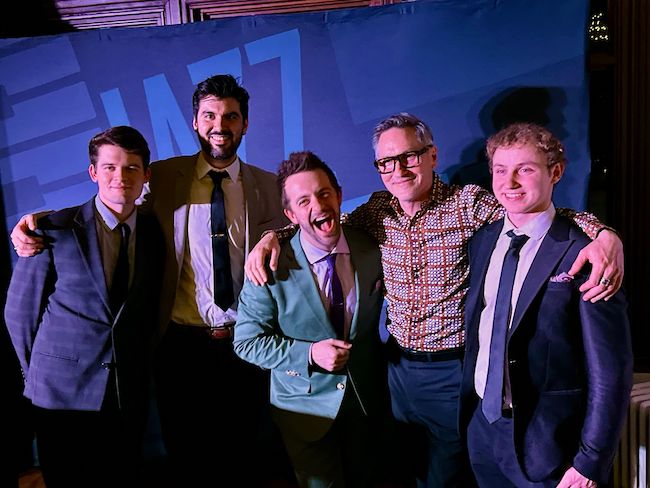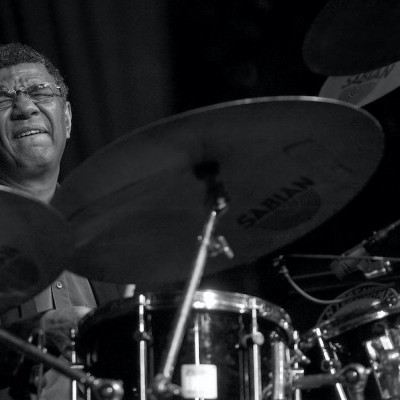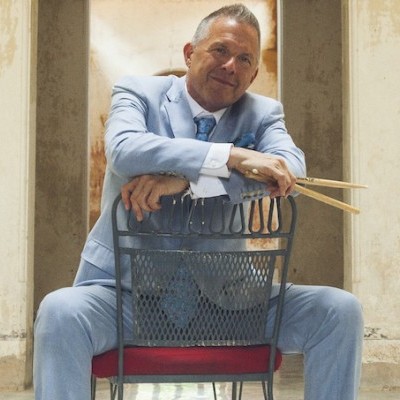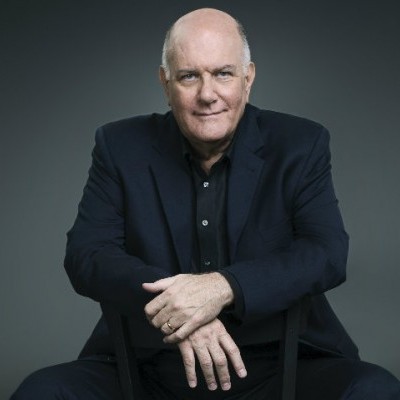Oct 28, 2025 10:47 AM
In Memoriam: Jack DeJohnette, 1942–2025
Jack DeJohnette, a bold and resourceful drummer and NEA Jazz Master who forged a unique vocabulary on the kit over his…

Benny Benack III and his quartet took the Midwest Jazz Collective’s route for a test run this spring.
(Photo: Courtesy Kyle Knoke)The time and labor required to tour is, for many musicians, daunting at best and prohibitive at worst. It’s hardly unusual for musicians to spend more hours on the road than on stage; venue availability dictates tour routes, which too often leads to wasted hours zig-zagging across the country. And did we mention the runaway costs of touring since the pandemic?
Kyle Knoke set out to address all that. Since the reemergence of live music after the pandemic, Knoke has brought the kind of talent usually hoarded by big cities to Jazz Coterie, the concert series he co-founded and directs in central Wisconsin. But he noticed some of the acts were making one-off trips in order to play Coterie shows — an expensive inefficiency all too common in tour routing, especially in far-flung middle America.
Enter the Midwest Jazz Collective. Working with a dozen other presenters, Knoke coordinated an optimized tour route through the Midwest’s major cities, baking in visits to educational institutions along the way. He then invited trumpeter and vocalist Benny Benack III and his quartet to take the collective’s route for a test run.
“All the club owners unanimously agreed that Benny would be a perfect candidate for this ‘guinea pig’ tour. He’s fearless and capable of rolling with the punches,” says Knoke.
Benack did just that from March 22 to April 10, playing at local clubs and giving masterclasses at the University of Cincinnati, Butler University in Indianapolis, the University of Wisconsin–Stevens Point and Lawrence University in Appleton, Wisconsin. The penultimate Jazz Coterie shows were the tour’s “anchor gigs,” as Benack calls them, before ending at Winter’s in Chicago. Instead of traveling by himself and playing with regional musicians, Benack was able to bring his full band from New York, thanks to the collective’s organization and support.
“We all dream about being on the road, but you don’t often get to do it for three weeks straight. It’s usually three days,” Benack says. “I was like, ‘You mean, I can have my full band, we can stay on the road for weeks on end, and everybody’s being compensated fairly?’ Like, this is all I want to do.”
For this inaugural tour, Knoke says Benack and his band hit about 90% of the dedicated jazz clubs in the region, in every major market except St. Louis. Even there, though the scheduling didn’t work out to play a venue, the band still rolled through jam sessions at Blue Strawberry and The Dark Room.
Per its name, the Midwest Jazz Collective is a loose band of participating venues, rather than an entity with concrete membership. As far as Knoke is concerned, any club in the Midwest can participate, so long as they’re foremostly a jazz venue.
“This is not about music venues that do jazz on Thursdays or something,” he says.
Knoke didn’t just organize the route: For this inaugural tour, he drove it. After every gig, Benack’s band would pile in his van and head to the next tour stop. (Though, as Knoke teasingly insists, that did not make him the tour manager. “I did say there’s a couple rules of the road: no lifting bags,” he says.) Commutes between tour stops averaged out to around 90 minutes. The very longest was four hours.
“Everybody would say over and over again, ‘I can’t believe we have an 11 o’clock lobby call, instead of [being at] LaGuardia at 6:15 a.m.,’” Knoke says. “I could see how much the band appreciated that.”
That perk had other ripple effects. Thanks to the collective’s routing, Benack and his band were able to hang around and hobnob with local musicians and attendees after their gigs — something that would have been totally foreclosed to them, had they needed to hit the road the first thing the following morning.
“There were nights where we went out to jam sessions after our show, or we stuck around to hear the next band,’” he says.
Even more promisingly, clubs who offered collective-routed shows outside their regular hours — like Cafe CODA in Madison and the Bop Stop in Cleveland — saw packed houses. That, to Benack, provided a “proof of concept” for the collective.
“On the road, weeknight shows are going to connect you from one weekend to the next. But also, that’s when clubs have the most to lose if it doesn’t sell,” Benack says. “It felt good to to deliver on our promise to a lot of these clubs, because they took a risk, too.”
Because of the long wind-up of booking schedules, Knoke doesn’t expect another Midwest Jazz Collective tour to hit the road until 2026, with an artist to be agreed upon by participating venues. The only criteria for selection: (1) the artist must be solidly positioned in the jazz genre, (2) be critically recognized, and (3) have a proven record of educational work, in order to keep the masterclass circuit at the collective’s heart.
At the invitation of Jazz at Lincoln Center, Knoke, Benack and other managers and educators involved with the inaugural Midwest Jazz Collective tour will also speak about the experience on a Jazz Congress panel next January, aiming to inspire others in the industry to tour smarter. In the meantime, Knoke is looking towards 501(c)3 status. That way, the collective can partially subsidize tours itself, bringing international talent to clubs with humbler price points.
“To me, at the core of this is the intimate jazz club. When people become superstars, and the only place they can play is a performing arts center with 2,000 seats, it changes the dynamic and the experience of jazz completely,” Knoke says. “A subsidized scenario celebrates the genre in the environment in which I think it thrives best.” DB

Jack DeJohnette boasted a musical resume that was as long as it was fearsome.
Oct 28, 2025 10:47 AM
Jack DeJohnette, a bold and resourceful drummer and NEA Jazz Master who forged a unique vocabulary on the kit over his…

Always a sharp dresser, Farnsworth wears a pocket square given to him by trumpeter Art Farmer. “You need to look good if you want to hang around me,” Farmer told him.
Sep 23, 2025 11:12 AM
When he was 12 years old, the hard-swinging veteran drummer Joe Farnsworth had a fateful encounter with his idol Max…

D’Angelo achieved commercial and critical success experimenting with a fusion of jazz, funk, soul, R&B and hip-hop.
Oct 14, 2025 1:47 PM
D’Angelo, a Grammy-winning R&B and neo-soul singer, guitarist and pianist who exerted a profound influence on 21st…

Kandace Springs channeled Shirley Horn’s deliberate phrasing and sublime self-accompaniment during her set at this year’s Pittsburgh International Jazz Festival.
Sep 30, 2025 12:28 PM
Janis Burley, the Pittsburgh International Jazz Festival’s founder and artistic director, did not, as might be…

Jim McNeely’s singular body of work had a profound and lasting influence on many of today’s top jazz composers in the U.S. and in Europe.
Oct 7, 2025 3:40 PM
Pianist Jim McNeely, one of the most distinguished large ensemble jazz composers of his generation, died Sept. 26 at…